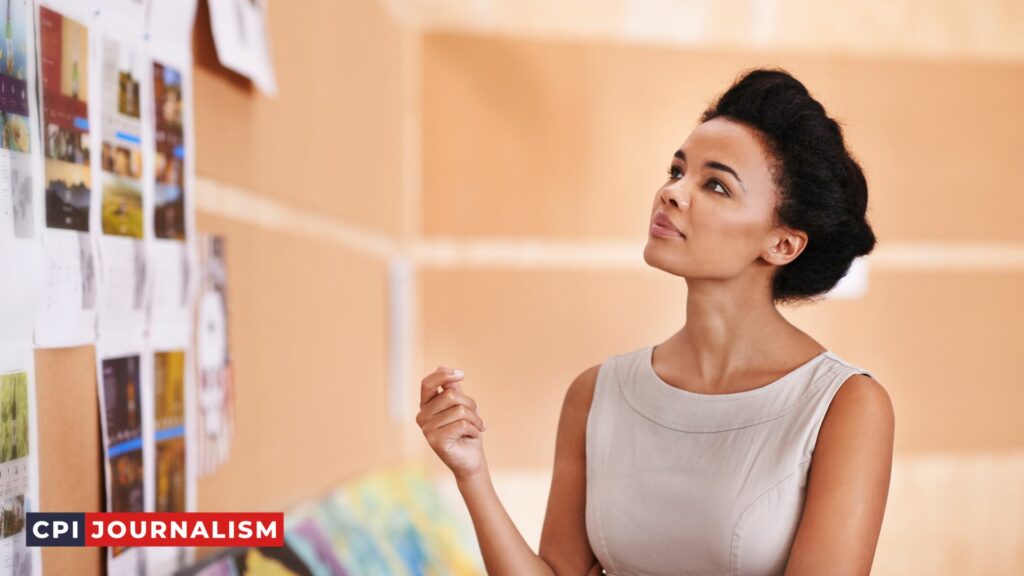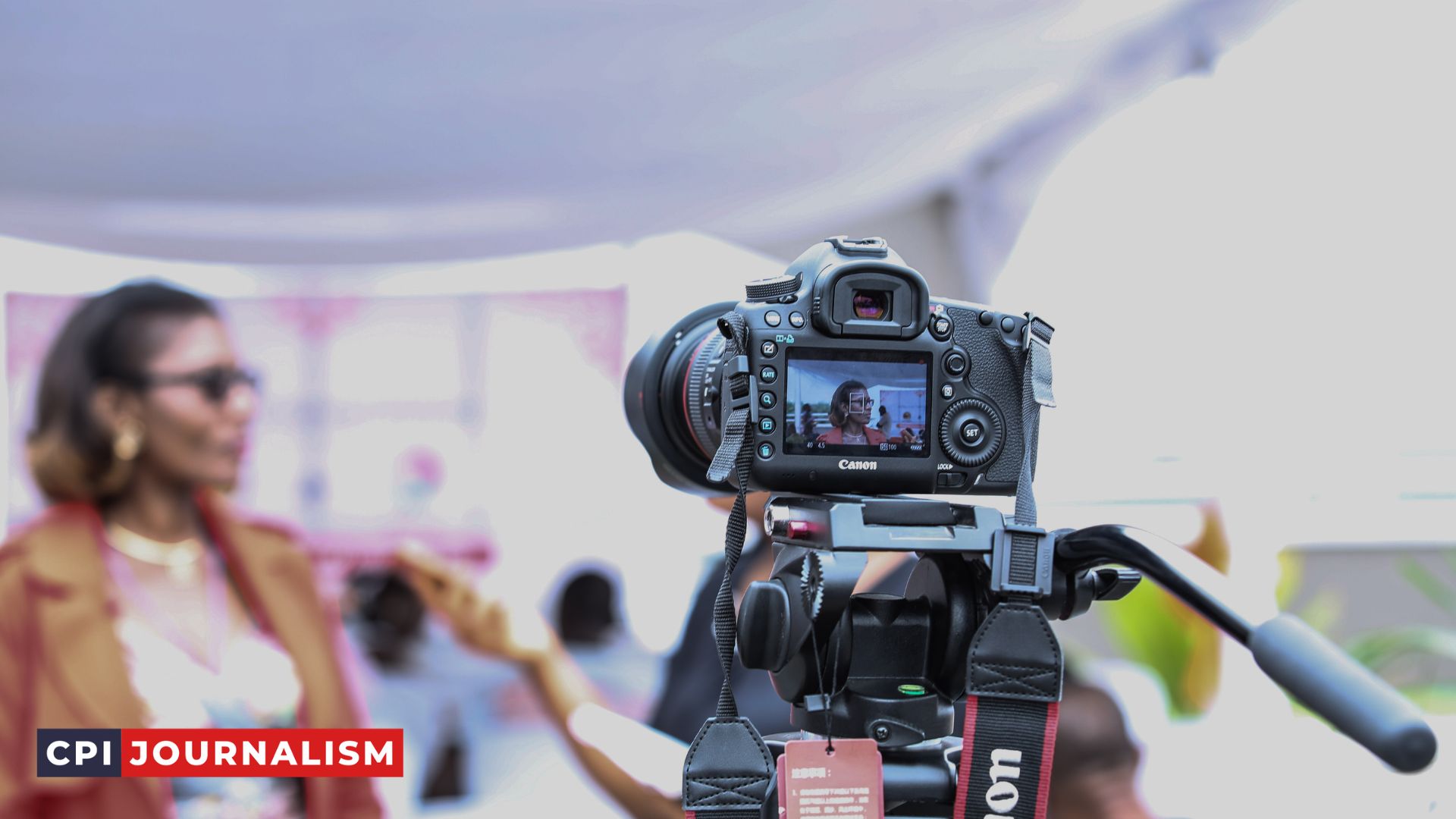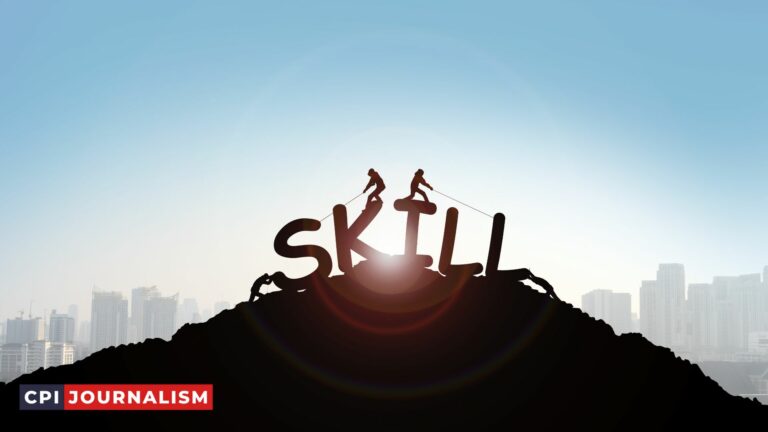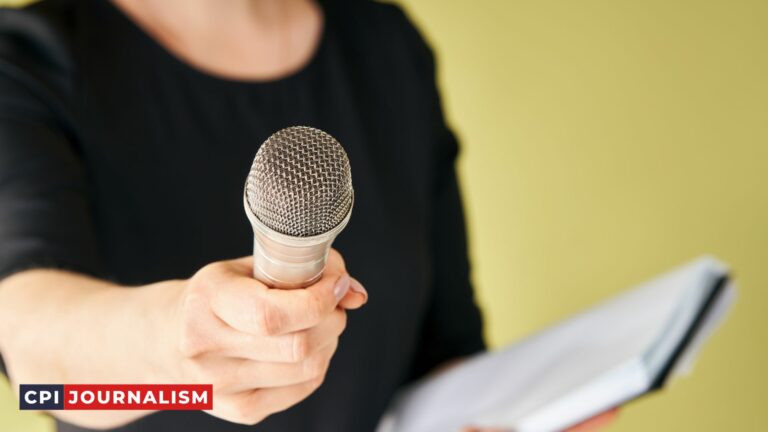How Can Broadcast Journalists Use Visual Elements, Such As Graphics And Footage, To Enhance A News Segment?
Greetings, fellow journalists! As an experienced and seasoned journalist, I am thrilled to share my knowledge and expertise with you all today.
Visual elements such as graphics and footage can be incredibly powerful tools for broadcast journalists in creating engaging and informative news segments.
In this article, we will discuss how broadcast journalists can use these elements to their advantage to enhance their news segments and capture the attention of viewers.
A. Overview of Benefits of Using Visual Elements
Broadcast journalists have the unique ability to use visual elements, such as graphics and footage, to enhance a news segment.
Visual elements can be used to help the audience better understand the story being told, as well as to add visual interest and emotion to the segment.
The following are some of the key benefits of using visual elements in broadcast journalism.
1. Increased Understanding: Visual elements can help the audience to better understand complex stories. For example, using graphics to illustrate abstract concepts or statistical information can make complex topics easier to understand.
2. Increased Engagement: Visual elements can grab the viewer’s attention and make them more engaged with the news segment. Footage of an event being reported on can be used to give viewers a better understanding of the situation and can help them to emotionally connect with the story.
3. Emotional Impact: Visual elements can be used to convey emotion and create a powerful impact. Footage of an event can evoke a strong emotional reaction from the viewer that words alone cannot.
Using visual elements in broadcast journalism can be a powerful tool for conveying information and creating an emotional connection with the audience.
It can be an effective way to help the audience better understand a story and to create a more engaging news segment.
II. Benefits of Using Visual Elements
Using visual elements in broadcast journalism is a powerful tool that can help to enhance a news segment and engage viewers. Visual elements such as graphics, footage, and video can help to tell a story in a more efficient and effective way.
Here are some of the key benefits of using visual elements in broadcast journalism:
1. Visual elements can help to convey complex information in an easier to understand way. Using a combination of audio and visuals can help to make complex topics more understandable for viewers.
2. Visual elements can help to make a news story more engaging for viewers. Using footage or graphics can help to draw viewers in, and make them more interested in the story.
3. Visual elements can help to illustrate a point more effectively. For example, using footage of a location or event can help to give viewers a better understanding of the topic at hand.
4. Visual elements can help to bring a news segment to life. Showing images or footage to accompany a story can help to make it more interesting and vivid.
Using visual elements in broadcast journalism can be a great way to make a news segment more engaging and effective. By taking advantage of the benefits of visual elements, broadcast journalists can create more impactful and interesting news segments.
A. Enhancing the Story
Visual elements, like graphics and footage, can be used effectively to enhance the overall story being told within a broadcast news segment. Experienced journalists should take full advantage of these tools to help make their stories more compelling and memorable.
The first step in using graphics and footage to enhance a news segment is to identify the story you are trying to tell. Once you have identified the narrative of your story, you can then determine which visual elements will best help illustrate it.
By carefully selecting the right visuals, you can better convey the point you are trying to make, while also captivating the viewer’s attention.
Graphics can be used to provide viewers with an easy-to-follow visual representation of a complex story. For example, if you are covering a story about rising unemployment rates, you could use a graph or chart to illustrate the data points.
This will help viewers better understand the story and the statistics being presented.
Footage can also be used to bring a story to life. As a journalist, you have the unique opportunity to show viewers the story as it is unfolding.
Whether it is a news conference, a protest, or a natural disaster, footage can be used to show viewers the reality of the situation. This helps bring the story to life and helps viewers to connect with the narrative in a more meaningful way.
Finally, journalists should also consider incorporating animation into their news segments. Animation can be used to create an engaging and visually appealing story. Animation can also be used to illustrate concepts or data points that would otherwise be difficult for viewers to understand.
In summary, the use of visuals, like graphics and footage, can be an effective way to enhance a broadcast news segment. Through careful selection and thoughtful implementation, these visuals can help journalists to convey their stories in a more compelling and engaging way.
B. Engaging the Audience
Engaging the audience is one of the most important aspects of creating a successful news segment. By using visual elements, such as graphics and footage, broadcast journalists can help to draw in viewers and keep them interested throughout the segment.
Graphics can be used to illustrate a point or to provide a visual representation of the story. For example, a graphic can be used to show a timeline of events or to compare two different pieces of data.
Graphics can also help to make a segment more entertaining by providing an interesting visual element.
Footage can be used in a number of ways to help engage the audience. Reporters can use footage to show viewers what is happening on the ground, to provide context and background information, or to demonstrate the impact of a story.
Footage can also be used to add a visual element to a segment, or to create a sense of atmosphere or emotion.
When using these visual elements, it’s important to keep the audience in mind. Visuals should be used to enhance the story and to help illustrate the points being made. Audiences will be more engaged if the visuals are relevant and interesting.
It’s also important to ensure that visuals are used in moderation, so as not to detract from the story itself.
By understanding the importance of visuals and how to use them to engage the audience, broadcast journalists can create a successful news segment that will capture and hold viewers’ attention.
C. Providing Context
Providing context for viewers is a critical part of a news segment, and a journalist should use visual elements like graphics and footage to explain why the news story is important.
Graphics can be used to help viewers visualize complex concepts, such as a timeline of events, a comparison of statistics, or a map to show the geographic scope of an issue.
Footage can be used to illustrate the impact of the news, such as providing a glimpse into the everyday lives of people affected by the story.
When selecting footage, journalists should be mindful of the tone they are trying to set. For example, footage of a peaceful protest may be preferable to footage of a chaotic march.
Similarly, graphics should be used judiciously and should be as simple as possible. Too much detail can overwhelm the viewer and obscure the main point of the story.
When used correctly, visuals can help to make a story more engaging, informative, and memorable. By selecting the right visual elements and providing context, a journalist can ensure that their news segment makes an impact and resonates with the audience.
III. Types of Visual Elements
As a broadcast journalist, it is important to understand the various types of visual elements that can be used to enhance a news segment.

Visual elements can be used to enhance the storytelling process, provide viewers with additional information, and create a more engaging experience.
1. Graphics: Graphics can be used to illustrate certain points or topics in a news segment. They can be used to provide visual representations of complex ideas, data, or statistics. Additionally, graphics can be used to create visual interest and capture the viewer’s attention.
2. Footage: Footage can be used to provide visual context to a news story. Footage can be used to show the viewer what is happening in the scene, and to provide a more immersive experience. Additionally, footage can be used to illustrate the effects of an event or situation on people or places.
3. Images: Images are another type of visual element that can be used to illustrate a story or concept. Images can be used to create visual interest and draw the viewer’s attention. Additionally, images can be used to provide a visual representation of a person or thing, or to illustrate a certain point.
4. Animations: Animations can be used to create a more dynamic experience for viewers. Animations can be used to illustrate a story or concept, and to provide visual interest and engagement. Additionally, animations can be used to provide a more entertaining experience for viewers.
By understanding the different types of visual elements available, broadcast journalists can use these elements to create a more engaging experience for viewers.
Visual elements are an important part of any news segment, and can be used to enhance the storytelling process and provide viewers with additional information.
A. Graphics
Graphics are a powerful tool for broadcast journalists to visually illustrate a story and engage their audience.
Whether it’s a map showing the location of a news event, a chart illustrating a trend, or an infographic that helps explain a complex topic, graphics can help clarify a story in a way that words alone cannot.
When using graphics in a broadcast news segment, though, it’s important to make sure they are accurate, relevant, and easy to understand. Carefully select graphics that clearly illustrate the story and help viewers understand the information in the segment.
For example, if you are discussing economic trends, use a chart that is easy to read and clearly shows the trend you’re talking about.
Also, make sure the graphic is easy to read and understand. Avoid using graphics that are overly complicated or that contain too much information. Graphics should be used to supplement the story, not to take away from it.
Finally, remember to give credit to the source of the graphic. If you are using a graphic from another source, make sure to include a link or mention the source.
This will help your viewers know where the graphic came from and give credit to the creator of the graphic.
In conclusion, graphics are an effective way for broadcast journalists to visually illustrate a story and engage their audience. When using graphics, make sure they are accurate, relevant, and easy to understand, and always give credit to the source.
B. Footage
Footage is one of the most powerful visual elements that broadcast journalists can use to enhance a news segment. With the right footage, journalists can effectively convey the atmosphere, emotion, and impact of a story.
When selecting footage for a news segment, it’s important to consider the context of the story. Footage should be chosen carefully to ensure that it accurately reflects the story being told.
As much as possible, use footage that is relevant to the story and supports the narrative. Try to avoid footage that is generic, or that could be used in any news story.
In addition to being relevant, footage should also be visually interesting. Choose clips that are dynamic and engaging, and that add to the overall story.
For example, if a story is about a major event, select footage that captures the energy and atmosphere of the event.
It’s also important to take into consideration the technical aspects of the footage. Make sure the resolution is high enough to be broadcast ready, and that the aspect ratio is correct for the segment. If the footage is not up to broadcast standards, it can be improved with editing software.
By using footage effectively, broadcast journalists can create a powerful and compelling news segment. Footage can be used to illustrate a story and create a vivid visual experience for viewers.
C. Animation
Animation is a powerful visual tool for broadcast journalists to use when conveying a story. Animation can be used to illustrate complex topics, create visuals to accompany stories, and bring a sense of clarity and personality to a news segment.
Animation can simplify complex topics, allowing viewers to better understand them. For example, if a broadcast journalist is discussing a medical procedure, they can use animation to show a step-by-step illustration of the process.
Animation can also be used to create visuals to accompany stories. For instance, if a broadcast journalist is reporting on a political event, they can use animation to create visuals of various political figures or symbols to accompany the story.
Finally, animation can add a sense of clarity and personality to a news segment. For example, if a broadcast journalist is discussing a serious topic, they can use animation to add a humorous element to the story.
Animation can be used to add a lighthearted touch to a news segment, while still conveying the important information.
Overall, animation is a great visual tool for broadcast journalists to use when conveying a story. It can simplify complex topics, create visuals to accompany stories, and add a sense of clarity and personality to a news segment.
Animation can be used to engage viewers and make a news segment more entertaining. By utilizing animation, broadcast journalists can enhance their stories and better inform their viewers.
IV. Strategies For Using Visual Elements
Broadcast journalists should have a comprehensive understanding of how to use visual elements to enhance their news segments.
By implementing the right strategies, broadcast journalists can maximize the impact of visuals, such as graphics and footage, to create memorable and informative news stories.
Below are some of the most effective strategies for using visual elements in a news segment:
1. Utilize Graphics to Illustrate Ideas: Graphics can be used to illustrate a point or concept more clearly. From simple diagrams to complex infographics, graphics can be used to break down complex ideas and convey them to viewers in an easily digestible format.
2. Showcase Footage to Provide Context: Footage can be used to provide context and add more depth to a news story. For example, footage from a scene or event can be used to give viewers a better understanding of the story.
3. Employ Animation to Explain Concepts: Animation can be used to explain complex concepts in a more engaging way. By combining visuals with narration, animation can help viewers better understand a topic.
4. Incorporate Visual Effects to Add Drama: Visual effects can be used to add drama and excitement to a news segment. From slow-motion effects to camera angles, visual effects can be used to create a more immersive experience for viewers.
By employing these strategies, broadcast journalists can effectively use visuals to enhance their news segments and create compelling stories.
A. Choosing The Right Visuals
As a broadcast journalist, it is essential to choose the right visuals to enhance your news segment. Using the right visuals can help to convey the story in an engaging and informative way. Here are some tips to bear in mind when deciding which visuals to use.
First, consider the type of visual. Different visuals can serve different purposes, such as graphics to illustrate data or footage to provide context to a story. Think carefully about which visuals will be most effective in conveying the story.
Second, ensure the visuals are relevant. The visuals should be directly related to the story, as well as reflective of the overall theme. It is important to avoid visuals that are potentially distracting or unrelated.

Third, consider the size of the visuals. If the visuals are too small, the audience may struggle to make out the details. On the other hand, if the visuals are too large, the audience may be overwhelmed.
Finally, make sure the visuals are of high quality. Poor quality visuals can be a distraction to the audience, and can detract from the overall quality of the production.
By following these tips, broadcast journalists can ensure they are using the right visuals to enhance their news segments. With the right visuals, a news segment can be more engaging and informative for the audience.
B. Incorporating Visuals into the Story
Visual elements, such as graphics and footage, can be used by broadcast journalists to enhance a news segment. By using visual elements, journalists can provide a richer, more immersive experience for their viewers.
Here are some tips for incorporating visuals into your news segments:
1. Choose visuals that are relevant to the story. Not all visuals will be relevant to the story, so it is important to be selective when choosing visuals to use. Try to choose visuals that are visually interesting and will help to illustrate the story.
2. Use graphics and footage to tell a story. Graphics and footage can be used to provide context and perspective to the story. For example, a graphic showing the timeline of an event can help viewers to understand the story more clearly.
3. Use visuals to add impact. Visuals can help to draw attention to a particular point or message in the story. For example, a footage of a protest can be used to illustrate the intensity of the situation.
By incorporating visuals into their news segments, broadcast journalists can effectively engage viewers and provide a richer viewing experience.
C. Utilizing Visuals To Showcase The Story
As a Broadcast Journalist, visuals are essential to a successful news segment. Utilizing visuals, such as graphics and footage, can help to tell the story more effectively and create a stronger impact on the viewer.
When selecting visuals, it is important to consider the following:
1. Choose visuals that are relevant to the story.
Visuals should be chosen with the story in mind. It is important to select visuals that will help to illustrate key points, provide context, or provide visual elements to the narrative.
2. Select visuals that are of the highest quality.
When selecting visuals, it is important to choose visuals that are of the highest quality. This could include high-resolution images and footage from reliable sources, as well as graphics and animations that are well-designed and professional.
3. Consider the impact of the visuals.
When selecting visuals, it is important to consider the impact that the visuals will have on the viewer. Select visuals that will create a strong visual impact and draw the viewer into the story.
By utilizing visuals to showcase the story, Broadcast Journalists can help to create a powerful and engaging news segment. By selecting visuals that are relevant, of the highest quality, and that create an impact, Broadcast Journalists can ensure that their news segments are memorable and effective.
D. Leveraging Technology to Create Visuals
As a broadcast journalist, the use of visual elements to enhance a news segment is an essential tool. Leveraging technology to create visuals can help to engage viewers and bring the story to life.
The first step to creating visuals is to determine which elements will best convey the story. This can include photographs, videos, and graphics. Once the elements have been identified, a storyboard should be created to organize the visuals and ensure they are cohesive.
One of the most powerful tools available to broadcast journalists is video editing software. This software can be used to create animations, special effects, and composite images, to name a few.
Additionally, the software can be used to add text and graphics, allowing you to customize the visuals to the story.
When creating visuals, the most important thing to remember is that the story should always remain at the forefront. Visuals are meant to enhance the story, not distract from it.
Finally, it’s important to make sure visuals are high quality and properly sized for television. Poorly sized visuals can be off-putting to viewers and take away from the story.
Leveraging technology to create visuals is an important part of the broadcast journalist’s job. By taking the time to carefully consider the visuals and the story, you can create a powerful news segment that will engage viewers and bring the story to life.
V. Conclusion
As an experienced journalist, I can confidently say that the use of visual elements, such as graphics and footage, can greatly enhance a news segment. Visuals can add depth and context to a story, making it more engaging, informative, and memorable.
Moreover, visuals can help to draw in audiences and make them feel connected to the story. When used appropriately, graphics and footage can be powerful tools in the hands of a skillful broadcast journalist.
In conclusion, I believe that broadcast journalists should take full advantage of visuals in order to create a compelling and memorable news segment.
By incorporating graphics and footage into a story, a journalist can make the segment more interesting and informative, and ultimately, help to draw in viewers.
With careful planning and consideration, broadcast journalists can use visuals to make their news segments stand out from the rest.
A. Summary Of Benefits
As an experienced journalist, I can attest to the many benefits that broadcast journalists can gain from utilizing visual elements, such as graphics and footage, to enhance their news segments.
From adding depth and interest to the segment to providing viewers with a better understanding of the story, these visual elements can be invaluable to the success of a broadcast journalist.
First, the use of visuals helps to add depth to the segment by providing viewers with a more immersive experience.
Graphics, such as charts and diagrams, can be used to illustrate more complex topics and provide viewers with a more comprehensive understanding of the story.
Similarly, footage can be used to provide viewers with a vivid representation of the topic, allowing them to experience the story as if they were actually witnessing it firsthand.
Second, visuals can also be used to bolster the credibility of the segment by providing viewers with visual evidence to support the journalist’s claims.
Footage can be used to give viewers a firsthand look at the story and the events that are being discussed, allowing them to make their own judgments about the situation.
Similarly, graphics can be used to provide viewers with hard data that can be used to support the journalist’s claims.
Finally, the use of visuals can also help to make a segment more engaging and interesting for viewers. By utilizing graphics and footage, journalists can provide viewers with a more dynamic experience that helps to keep their attention and keep them engaged throughout the segment.
In conclusion, the use of visuals, such as graphics and footage, can be a powerful tool for broadcast journalists.
From adding depth and interest to the segment to providing viewers with a better understanding of the story, these visual elements can be invaluable to the success of a broadcast journalist.
B. Summary of Strategies
As an experienced broadcast journalist, I have identified several key strategies for using visual elements to enhance a news segment.
These strategies are as follows:
1. Use Graphics to Clarify: Graphics can be used to illustrate complex topics and data, making them easier to understand for viewers. This can be done through charts, graphs, and diagrams that are designed to make complex concepts easier to comprehend.
2. Showcase Footage: Footage from events can be used to bring news stories to life. This can be footage from press conferences, interviews, or other events related to the story. Utilizing this footage can help to create a more comprehensive and impactful news segment.
3. Leverage Visuals to Support Narratives: Visuals should be used to emphasize the narrative of the news segment. This can be done through the use of montages, motion graphics, and other techniques to bring the story to life.
4. Incorporate Visual Aids: Visual aids such as maps, illustrations, and photographs can be used to further illustrate a news story. These visuals can help viewers to more easily visualize the story and understand its implications.
By utilizing these strategies, broadcast journalists can more effectively use visual elements to enhance their news segments, creating more comprehensive and engaging news stories.
C. Final Thoughts
As an experienced broadcast journalist, I can say with confidence that using visual elements such as graphics and footage to enhance news segments can be an effective and powerful tool.
Graphics and footage can help to illustrate a point, provide context and clarity, and even engage viewers in a way that words alone cannot.
However, it is important to remember that visuals should always be used in a way that supports and enhances the story, rather than taking away from it.
When used correctly, visuals can be an incredibly effective way to communicate a message and engage an audience.
In conclusion, visuals can be a great way to make a news segment more engaging and impactful. But it’s important to remember that the visuals should always be used to support the story and the message you’re trying to communicate.
By understanding how to use graphics and footage to enhance your news segments, you can create powerful and effective stories that will have a lasting impact on your viewers.







